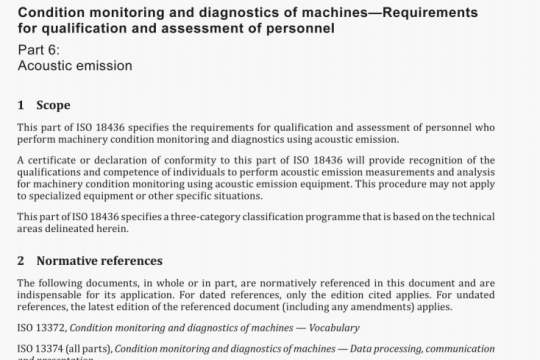ISO 13517:2013 pdf free
ISO 13517:2013 pdf free.Metallic powders – Determination of flowrate by means of a calibrated funnel (Gustavsson flowmeter)
The flow rate of the reference sample shall be determined by the above method. If the flow rate has changed to be outside 40,0±0,5 s, a correction factor must be used when measuring different powders.
This correction factor is obtained by dividing 40,0 by this new value for the Chinese emery grit.It is recommended that the users periodically verify whether a correction is needed or not.It is recommended that, before a correction factor is adopted, the cause of the change be investigated.If the flow rate has decreased, it is probable that repeated use has burnished the orifice and a (new)correction factor is justified. An increase in flow rate may indicate a coating of soft powder on the orifice.
This coating should be carefully removed and the calibration test repeated.It is recommended that the use of a funnel be discontinued after the duration of flow of the referencesample has decreased to less than 37 s.
In general, the powder shall be tested in the as-received condition. In certain cases, and afteragreement between the supplier and user, the powder may be dried. However, if the powder is susceptible to oxidation, the drying shall take place in a vacuum or in inert gas. If the powder contains volatile substances, it shall not be dried.
Transfer the test portion to the funnel, keeping the discharge orifice closed by a dry finger. Take care that the stem of the funnel is filled with powder. Start the stopwatch (3.4) when the orifice is opened and stop it at the instant when the last of the powder leaves the orifice. Record the elapsed time measured to the nearest 0,1 s.
Calculate the arithmetic mean of the results of the three determinations and report the value in seconds per 50 g, rounded to the nearest second.
If the alternative size of the test portion according to 5.4 is applied, the result of each determination shall, before the calculation of the arithmetic mean of the results, be divided by the mass of the sample and then be multiplied by 50 g. The result is thus recalculated in seconds per 50 g.ISO 13517 pdf download.




